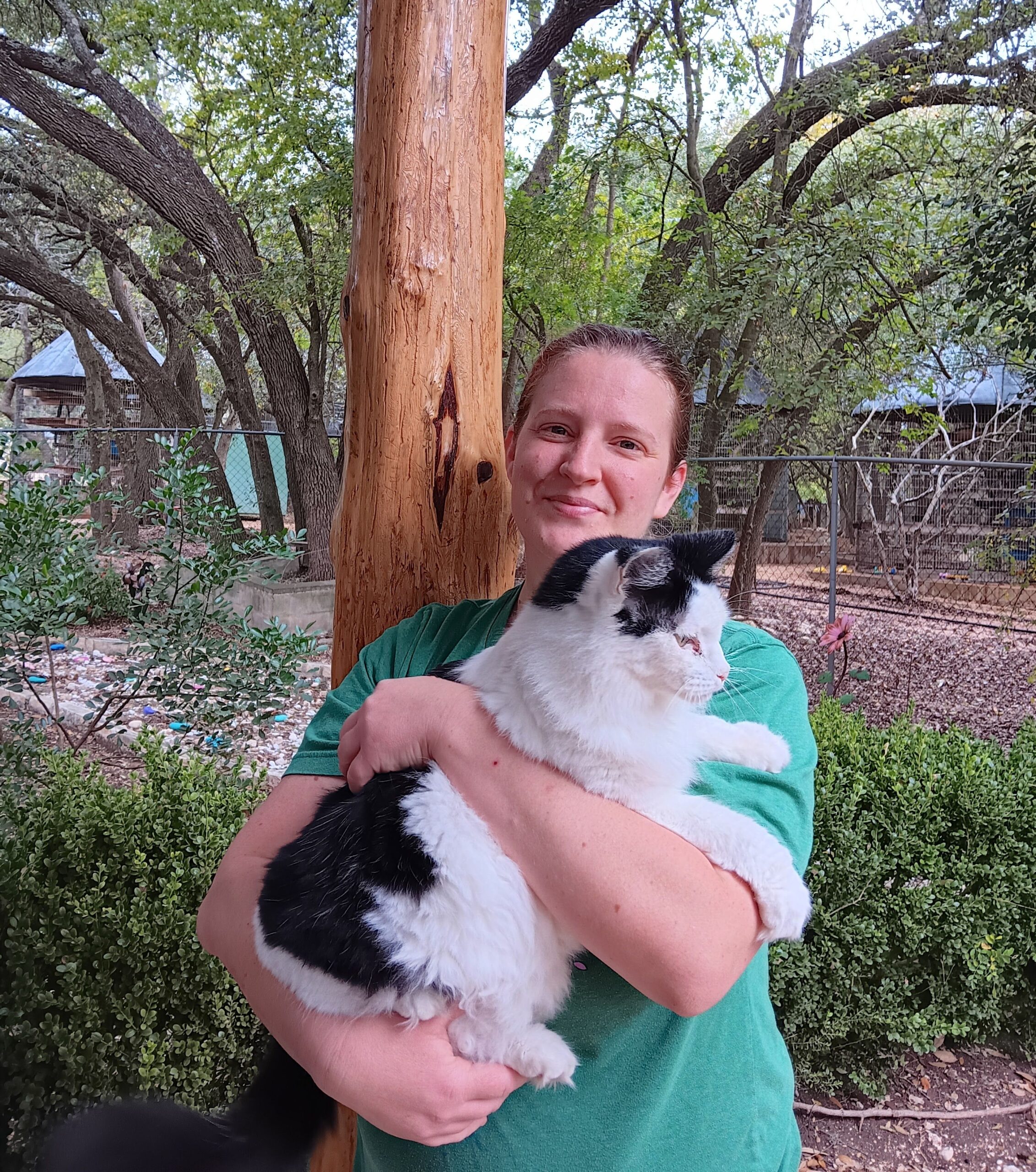In the wild, animals spend much of their time traveling, foraging for food, exploring new habitats and socializing. In a sanctuary setting, it is our job to introduce as much variation as possible for them to keep their brains and bodies active.
That’s why the enrichment coordinator job is so essential!
Laura Jackson, a San Antonio native, has been our enrichment coordinator for about two-and-a-half years and was an animal caregiver for two years before that.
How did your career path began?
I was always interested in animals growing up, reading magazines like Your Big Backyard and Ranger Rick. I went on to study wildlife and wildlands conservation at Brigham Young University. I saw a flyer one day for a study abroad in Central America through the Maderas Rainforest Conservancy.
After watching howler monkeys for a month in the rainforest, I was hooked and decided I wanted to be a field primatologist. I was accepted to Central Washington University and after completing my thesis on Tibetan macaques in China, I received my masters of science in primate behavior. I went back to Texas and taught high school biology for four years. After realizing it wasn’t the right fit, I found out about Primarily Primates.
What are the four different types of enrichment?
Food is the most popular. To encourage natural foraging behavior, we hide their food in a paper tube, a pile of shavings, a puzzle feeder or empty water bottles. Social enrichment can include playing animal sounds for them, showing them a mirror or pictures of other animals. Structural includes adding or moving perching, hammocks or water sources.
Lastly, object enrichment appeals to sight and sound and touch, so new toys, music and scents are all good examples.
Are there any animals who stick out in your mind who really get excited over enrichment?
We have some chimps who are very passionate nesters such as Thomas and Buffy. Baxter, Willie, and Jason also like to paint. Monkeys Phoebe, Olivia and Sally Ann love a hammock to swing in. Capuchins Sampson and Sidney love to push toys around their enclosure and bang them around.
The monkeys love to forage (not the lemurs so much) for treats in a pile of shavings, sand, leaves or mulch. The parrots and chimps love nuts with shells. Capuchins Squirt, Charlie and Nina especially love lemons and onions to rub on themselves, which is a process called anointing. (It can be done to repel insects, self-medicate, communicate, etc.)
Is there a particular animal you feel a strong connection with at the sanctuary?
Sidney capuchin is a sweet boy who is best friends with his roommate, Sally Ann. He is vibrant and fun and is always excited to see me. He was one of the first monkeys I connected with here, and I love to visit with him when I pass by.

